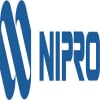Dive Brief:
- Vertex Pharmaceuticals Inc. has chosen two triple combination cystic fibrosis treatments to advance into late-stage testing, a move executives said alleviates some risk as the biotech looks to secure an even stronger market position.
- Next-gen correctors VX-659 and VX-445 will both move into Phase 3 studies in early or mid-2018, Vertex said during a Wednesday afternoon call with investors. Both drugs will be paired with another investigational corrector, tezacaftor, and a potentiator, either Kalydeco or the clinical-stage VX-561. Vertex plans on testing each regimen in patients who have one F508del mutation and one minimal function mutation, as well as those with two F508del mutations.
- The pipeline update came bundled in Vertex's strongest annual earnings report yet. The biotech's revenue was $2.49 billion for 2017, a 46% spike from 2016. Net product revenue reached $621 million in the fourth quarter and $2.17 billion for the full year — up 37% and 29%, respectively.
Dive Insight:
Vertex is the one to beat in cystic fibrosis. Its marketed products Kalydeco (ivacaftor) and Orkambi (lumacaftor/ivacaftor) can currently treat about half the estimated 75,000 people with the disease. Together, the drugs helped Vertex achieve year-over-year net product revenue growth in the double-digits for each quarter of 2017.
Yet the biotech isn't resting on that success. Its new corrector tezacaftor, in combination with Kalydeco, has a target action date of Feb. 28. Should the drug gain approval — which most expect it will — and Vertex is able to get label expansions and greater European reimbursement for Orkambi, the company believes its portfolio could treat up to 44,000 cystic fibrosis patients.
Looking further down the line, Vertex believes it could offer treatments for the whole of the cystic fibrosis population through triple combination regimens and gene editing therapies. In 2015, the company teamed up with CRISPR Therapeutics AG on a four-year research project focused on developing drugs for the genetic causes of cystic fibrosis and hemoglobinopathies.

Vertex decided to take two of its four triple combos into Phase 3 trials based on strong data, but also on strategic rationale. Developing more than one means all the company's eggs aren't in a single basket, CEO Jeff Leiden said.
"All four of our regimens we feel showed results that were certainly significant enough to take into Phase 3," Leiden said during the Jan. 31 call. "But we're taking two forward because that's one way of modifying one risk, and that's the risk of some rare off-target toxicity due to the next-gen corrector in one of these regimens. And obviously by taking two forward, we mitigate that risk."
In Phase 2 testing, investigators paired both VX-659 and VX-445 with Kalydeco and tezacaftor, evaluating them in patients with one F508del mutation and one minimal function mutation. Results showed that, from baseline through four weeks, patients receiving the respective regimens experienced on average 13.3% and 13.8% absolute improvements in percent predicted forced expiratory volume in one second — a measure of lung function.
Vertex said it is still working on the designs for the late-stage triple combination programs. However, it expects to initiate two Phase 3 studies for VX-659 in the first half of 2018. One will be in F508del/Min patients, the other in F508del/F508del. Pending more data, Vertex also intends to start a Phase 3 program in mid-2018 that will look into the VX-445 regimen as a once-daily treatment for F508del/Min and F508del/F508del patients.
Moving past cystic fibrosis
With Vertex barreling toward unlocking the majority of the cystic fibrosis market, investors have been curious as to what therapeutic areas the company will branch into next.
Executives noted that the priority now is developing treatments that can apply to 90% of the cystic fibrosis market. But, the company pointed to its deals with CRISPR and Moderna as well as a strong cash position as evidence that it could do external business development to find its next target.
"So the first mission was [to finish] the journey in CF, see if we can get some generic therapies for 10% of patients and really just change the course of this disease or prevent this disease," Leiden said.
"The second part of the journey is what's beyond CF. Can we do this again?" he said, adding that the company previously showed its ability to develop drugs outside the cystic fibrosis space, such as in HIV and hepatitis C. "This is a company that has a very special innovation engine and can create these kinds of breakthrough drugs, and although we haven’t talked about it ... we have been working on that in four or five diseases including sickle cells and [alpha-1 antitrypsin deficiency]."
Vertex stock opened at $174.11 per share on Thursday, up 4.3% from the prior day's close.














